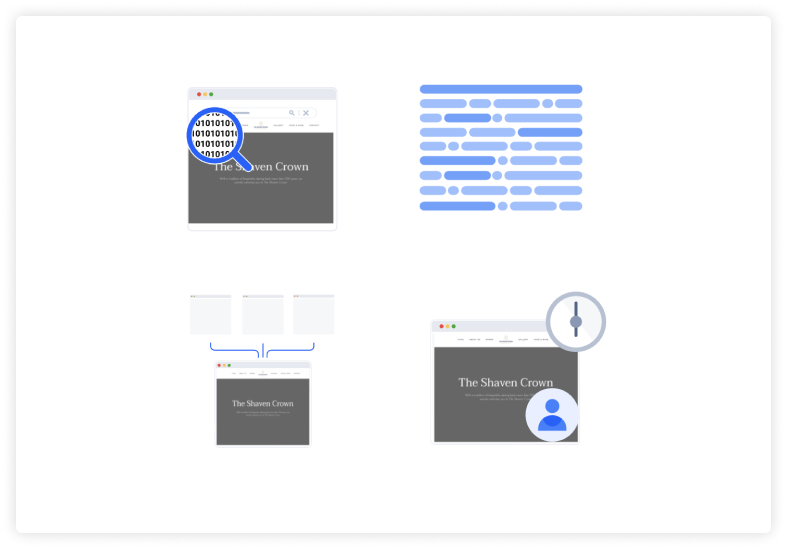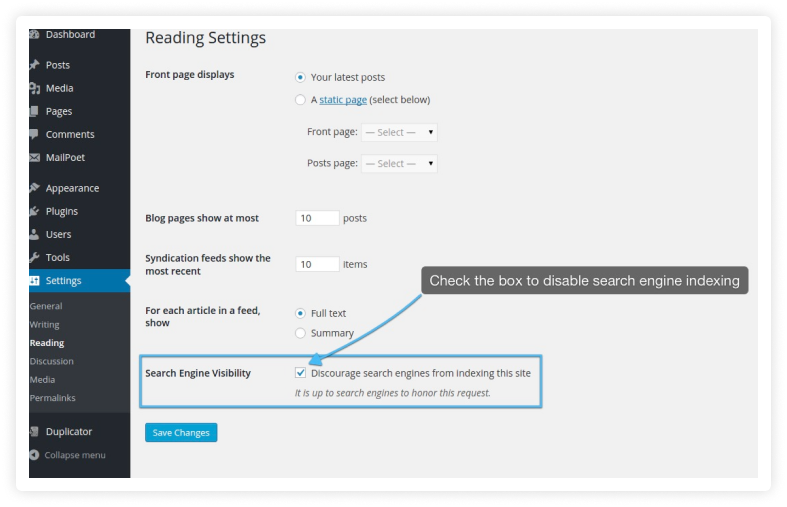3 Ranking Factors You Must Get Right
05 Nov, 2021

What Are Ranking Factors?
Any conversation about SEO will inevitably touch on the question of ranking factors usually with the following sentence: ‘is X a ranking factor?’ This question means one of two things: is this factor more likely to make Google rank your website favorably (a positive ranking factor) or unfavorably (a negative ranking factor).
There are hundreds of different ranking factors that impact how your site ranks on Google. Many lists on the internet tend to name 200+ factors. None of these lists are definitive and they often do more to overwhelm people who are new to SEO and Digital Marketing than to help them.
Focusing on The Most Important SEO Ranking Factors
Long lists of the most important rankings factors can make it difficult for SMBs to know where to start with SEO, making the prospect of improving your site’s SEO yourself more daunting. Focusing on the essential rankings factors can help ease this feeling and ensure you get top rankings on Google as quickly as possible.
It’s important to remember that not all ranking factors are equally important: If you don’t have some rankings factors covered your site won’t have any chance of rankings at all. Whereas others may only make a big difference when your pages are already ranking well. This is why picking the right ranking factors, in the right order is a crucial part of an effective SEO strategy. To help you concentrate on the essentials, here are three ranking factors you definitely need to get right.
SMB Tip: If you want to make sure you focus on the most important ranking factors straight away, try rankingCoach 360. The app will scan your site and create an SEO strategy with step-by-step video tutorials for you to follow that will cover all the most important rankings factors.
1# Ranking Factor: Crawablity

SEO isn’t like the popular music chart. Your site won’t immediately come from nowhere to go straight to the top of the rankings for all your chosen keywords. Before you can rank on Google at all, your pages need to be indexed by the search engine. For this to happen Google’s crawler, Googlebot needs to be able to find your website and effectively crawl its pages.
The ease with which Googlebot can do this for your site is known as your site’s crawlability. The crawlability of some sites is so bad that Google is unable to find and index their pages, meaning they don’t appear in the search results at all.
Crawlabiltiy could also be limiting your site’s chances of getting those top rankings, if your site takes a long time to crawl or certain pages on your site are difficult for Googlebot to find this will also negatively impact its rankings and can mean that your site’s content will be updated less often in the search results.
Signs I Need to Work on This Important Ranking Factor
If you cannot find any pages from your website on Google, even when you type in its URL, your site is likely to have issues with crawlability. The same goes for individual pages that don’t appear in the results within a couple of weeks of being put online.
How to Work on Your Crawlability
A key part of this process is making a distinction between content that is for the eyes of visitors and that which is for search engines. A website may look great to visitors, but if it is not coded in a search engine-friendly language, no one will ever see it, not even Googlebot. If you are not an experienced programmer it is recommended that you stick to using an SEO-friendly CMS and ensure that any pages that you want to rank are set to be crawlable for Google. For instance, on the WordPress CMS, you need to untick the settings box that says Discourage search engines from indexing this site.

Media content like videos and photos should have appropriate accompanying keyword-rich descriptions. Other key areas to focus on with this ranking factor are images sizes and URL structure: websites with large images and confusing URL architecture can be particularly hard for Google to crawl. If your website is not appearing in the search results at all, then you should look into submitting a sitemap to Google. This will help to ensure that Google can find index your website and all of its pages.
2# ranking Factor Mobile Accessibility

It's surprising how many people you come across who are considering making an App for their business but have never taken the time to make sure their company's website provides an adequate user experience for smartphones. Delivering a quality user experience to people visiting your site on their smartphones is known as making your site mobile accessible. This is a crucial ranking factor. A key reason why this is so important is that over half of the internet users do not use a desktop computer to browse online, it's likely that half of all visitors trying to visit your site are doing so with a smartphone, even more, if you are a local business who many customers are likely to find using their smartphones.
The importance of this factor increases significantly when we also include the consequences of Google's 2015 April update, nicknamed Mobilegeddon. Since this time, Google has given priority ranking to web pages that display correctly and load quickly on mobile devices. This means that in the vast majority of cases the experience that your site delivers to mobile users will be the one Google uses to benchmark for its rankings, meaning that site owners who do not get this right have no chance of getting top rankings. Ignoring the smartphone user experience on your site is like trying to win the Indy 500 with a flat tire.
Signs I Need to Work on This Important Ranking Factor
It’s vitally important that you visit your website on smartphones as well as your desktop computer to gain a better idea of the type of experience your site is delivering to mobile users. Due to the different screen sizes and configurations, you may find that pages on your website are difficult for mobile users to navigate or that images and text that display well to desktop visitors can be hard to read or may not be visible at all to mobile visitors. Anyone who needs an external more data-driven perspective on mobile accessibility should enter their website into Google’s Mobile-Friendly Test.
Making Sure Your Site Is Mobile Accessible
For those of us looking to build a new website, the process is relatively straightforward as long as we make smartphones part of the planning process from the beginning. A good way to start with this is to make sure that the CMS you choose creates a smartphone-friendly website. WordPress, Wix, and Ionos website builder are all good examples of CMSs that work well with Smartphones. Take your time to weigh up the different options. Articles like this one from Tech Radar can help.
If we don't have the luxury of building a smartphone-friendly website from the ground up, then another option is to install plugins that improve the user experience for smartphones.
The AMP plugin is a great option for users of the WordPress WIX and many other CMSs looking to optimize the user experience for smartphone users. Since its launch in 2015, the plugin has been used to publish over 4 billion pages. AMP creates a special version of your website containing its essential elements in more efficient smartphone-friendly code. This really helps with key problems often experienced by smartphone users such as load speeds and image display. The median load time of an AMP page is less than 0.5 seconds.
SMB TIP: rankingCoach 360 scans your website and creates an easy-to-follow plan with step-by-step video tutorials that will help you to work on all the key ranking factors. Find out more
#3 Ranking Factor: Bounce Rates

Our final ranking factor in the top 3 is different from the other two because it is an actual measurement that Google calculates. Bounce rate refers to the proportion of visitors to your site who view just one page and leave it very quickly.
We have placed bounce rate in the top three most important ranking factors to draw attention to an important concept in SEO that many people fail to understand: The way people respond to your site, after clicking on it in the results, has a direct impact on the way it ranks in future searches. This means that tricking people into visiting your website who are not interested in what has to offer can do more to hurt your SEO rankings than help them.
Signs I Need to Work on This Important Ranking Factor
A bounce rate under 30% is very good, though if it is really low( 5% or less), check to make sure your Google Analytics is set up correctly as this could be a sign that your analytics aren’t working correctly. The rankingCoach application can show you how to set this up properly. A bounce rate above 60% is not good and one over 90% is terrible.
Improving Your Site's Bounce Rate
Improving the first two ranking factors can also help with bounce rates: If smartphone users are visiting a site that is either slow or looks broken on their device, they won't stick around very long, and many improvements to crawlability will also enhance the user experience your site offers.
But improving your technical SEO is only one potential solution. The solution to issues with the bounce rate can be much more varied than the solutions of those of the first two rankings factors. This is because a high bounce indicates that visitors to your website and aren’t happy with what they see when they visit it. The reason for this is as complex as the tastes of your specific audience.
For instance, your bounce rate could be down because the keyword and Google Ads choices are targeting the wrong audience with your ads, and this is why they are not interested in your site content. On the other hand, your site’s content could be the problem.
Maybe you need to spend a little more time writing informative and easy-to-read content that better serves your audience, or your written content is good but its presentation is lacking, perhaps your paragraphing is too dense and you don’t have any images or videos to make your content more visually appealing to modern readers who need space for their eyes to breath and visual stimulation to stay interested.
One of the best ways to find out why your site’s content isn’t ranking or achieving the desired outcome is through competitor analysis. Tracking the progress of your biggest business and keyword competitors in the SERP will help you to develop a better understanding of what top rankings content is doing right, which is a great way of working out what you need to improve on.
SMB Tip: rankingCoach FREE offers free competitor monitoring, so you can track your keywords in the SERP and make sure your page content is more appealing and interesting than the pages competing with it.
The Final Word on The Top 3 Ranking Factors
This article has given you a more in-depth look at three key ranking factors in order to help you focus on them in a way that helps you to see them less as a list of boxes to tick and more as tips on how to give your audience what they want and expect from a good website experience.
To get this right you need to make sure you have a good technical SEO setup that ensures Google can find and index your pages. That these pages are as pleasurable to look at for smartphone users as they are for desktop users, and that the content on your site beats its competition in the rankings by serving the user.
